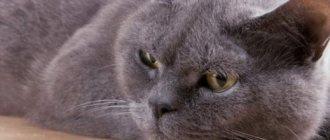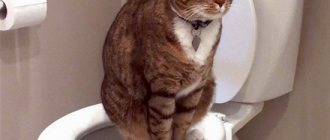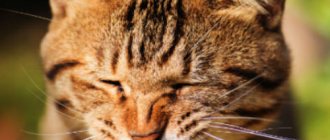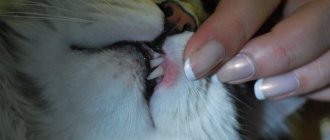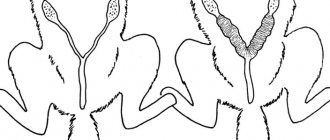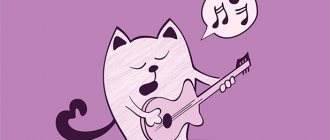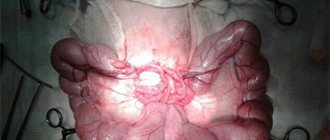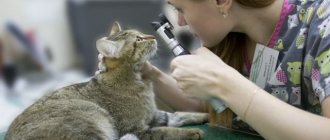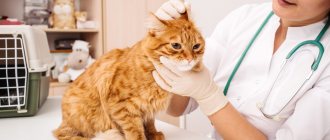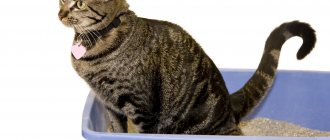11242Administration
When an animal is eating consistently but not gaining weight, pet owners sound the alarm. Many people believe that if a cat eats, then weight gain is a natural process. This is not entirely true. Animals, like people, are active and dynamic, which burns extra calories and helps the pet lose weight. When a cat loses weight but eats well, this is normal. With active life, weight loss is ensured by normal metabolism. The situation is different with sedentary cats.
Don't expect your kitten to actively gain fat. During the first 9-11 months, kittens develop their skeleton and posture, and the baby gets fat and loses weight. Young cats and female cats become soft and plump 1-2 years after birth.
© shutterstock
Why do you lose weight?
If a cat eats a lot but is losing weight, there are a number of reasons that can be identified::
- Worms . Helminths or worms destroy the animal's body from the inside. Even if the cat eats a lot, the pet loses weight. Helminths get inside the animal from dirty shoes, unwashed hands, or a dirty tray. Cleanliness and hygiene will protect the cat. To combat worms, special products are sold that are taken on average for about six months.
- Damage to internal organs . An analysis at a veterinary clinic will help answer the question of why a cat is losing weight. Disturbances in the digestive system are also noticeable externally. These are impurities in the urine and stool consistency, and an unusual color. During the period of illness, the pet’s appetite decreases and he eats little.
- Stress . The problem may be the arrival of a new pet. The cat's health is under serious stress due to nervous stress. Therefore, a once fat cat may begin to lose weight in just a couple of months. Any changes for a pet take a long time to get used to.
- Summer heat . If a cat loses weight in the summer and has a good appetite, this is normal. During the summer season, the furry animal sheds its fur, and due to temperature stress, it eats less than in frosty winters.
- Age . An old cat eats less than a young one. This is due to low mobility. An older cat that is losing weight should still be checked by a veterinarian, but for animals that sleep most of the time, weight loss is common.
- Tumors . Neoplasms on the body, and especially in the body, are not easy to detect. With benign tumors, the cat should not lose weight.
- Feed _ The quality of food determines the weight of the animal, how quickly it loses weight, how much it eats, and affects processes in the body. You should not suddenly change your cat’s diet from dry to liquid or to homemade food. Even a dog that is less picky about food will not begin to gain weight from this. Changing the menu for a pet is a consistent and long process, during which it loses weight in any case.
Stressful state
Very often, cat owners are faced with the problem that their animals lose weight. This may occur due to the fact that when the animal is stressed, it loses its appetite. Stressful conditions for an animal can be the following:
- Moving.
- Arrival of relatives.
- Change of owners.
- Birth of children.
- New pet in the house.
If weight loss is associated with stress, then it is necessary to exclude the factor that caused stress in the animal. Also, you should not pester the animal; you need to give time for the cat to calm down and understand that nothing threatens its life. Only as a preventative measure should you give the animal sedatives.
In this case, the animal must be fed as before and it is advisable to use the same dishes in which the animal was fed previously. In addition, the cat should be fed by a person who has done this before. If everything is returned to its original place, the animal’s appetite may be restored and it will begin to gain weight again.
What is the optimal weight for an adult cat?
Depending on the breed, the pet’s weight varies from 3 to 7 kg. Mature animals are usually fit and lean, especially if it is a male, who is losing weight and gaining weight constantly. The lifestyle of a healthy cat is active and dynamic. After “playing”, the pet wants to drink a lot, the animal eats abundantly, which has a positive effect on the digestive processes.
© shutterstock
Dangerous symptoms of weight loss include:
- Lethargy, apathy . Sudden mood changes are evidence of anxiety. The cat feels bad and cannot find a place for itself, does not play and refuses food.
- Blood, frequent diarrhea . If the cat has lost weight and foreign inclusions are observed in the urine and diarrhea, you need to go to the clinic and have tests done.
- Bloating . Do not confuse high weight with a bloated stomach. The cat may become worse and worse due to internal swelling, infection, infection, which is why he does not eat.
Risk factors
Weight gain results from the deposition of fat cells. In most cases, this is due to low physical activity and poor diet.
There are also other risk factors:
- Age. Over time, physical activity decreases and metabolic processes are disrupted. Replenishing energy requires less energy. If the cat continues to eat as usual, the extra calories turn into fat cells and weight increases.
- Breed. The tendency to obesity manifests itself in some cat breeds at the genetic level. If you do not adhere to dietary nutrition, the animal begins to gain weight. Mixed breeds are prone to obesity.
- Floor. Cats are more prone to gaining excess weight due to hormonal changes. Although at the genetic level, cats of the same breed always weigh a couple of kilograms more.
- Diseases. Sometimes obesity becomes a consequence of pathological metabolic disorders, hormonal imbalance, diseases of internal organs and systems. Diabetes mellitus promotes the deposition of fat cells.
- Castration, sterilization. After the operation, animals are no longer able to reproduce. On the one hand, this is very convenient for the owners, on the other, it increases the risk of developing diseases. Side effects include weight gain due to hormonal imbalance.
- Overfeeding, overeating. Cats that have free access to food tend to overeat. In addition, many artificial foods contain flavoring additives, large amounts of salt and fat, and therefore very often cause obesity. When feeding natural food “from the table”, the likelihood of weight gain also increases. Foods that are healthy for people are not always healthy for cats. The components are not digested, metabolic processes are hampered, and fat cells are deposited.
- Insufficient physical activity. In the wild, cats lead an active lifestyle, constantly hunting and climbing trees. In apartment conditions, animals practically do not move, so calories are quickly stored in fat.
Signs of obesity are excess weight, difficulty walking, shortness of breath, slow movement, drowsiness, apathy, bad mood.
When should you not panic?
An animal's activity is the best evidence of health. A cat that constantly plays, runs, sleeps little and constantly asks for food is not at risk and periodically loses weight. The morning amount of food is burned in a matter of hours and therefore in the afternoon the pet will ask for more. But you should not overfeed your cat.
Old cats are already losing interest in games, losing weight, and it’s not a matter of illness. With age, the cat moves and studies less and less, and observes and evaluates more often. The fewer movements, the less energy is burned, and, accordingly, the minimum amount of food will be needed.
Mild poisoning for cats is a common situation, especially if the pet eats the same food as the owner. Diarrhea for two to three days does not indicate a serious illness. If the problem persists for more than a week, it is wise to contact a specialist.
Animals experience stressful situations more difficult than humans, but faster. The appearance of a kitten, puppy, child, scary cat plush toy or new person in the house can completely destroy the appetite and lead to the animal losing weight. There is no need to panic: within a couple of days the cat will return to its usual feeding schedule.
© shutterstock
Thin or fat
In ancient times, people ate to live. Food served as a source of energy and strength, providing the calories the body needed. Over time, people mastered more and more new types of food production. Gathering, farming, fishing and hunting.
Over time, various additives and preservatives have appeared. Food has become tastier and has become an integral part of human life, not only as a means of survival, but also for pleasure. The sense of proportion has decreased significantly, because for many it is much more interesting to eat an exquisite steak and cake than roots and vegetables.
A staggering number of people on the planet are obese.
This disease occurs for the following reasons:
- parents using goodies as “rewards” for their children;
- larger serving size than required;
- excessive caloric content of prepared dishes;
- lack of physical activity (the number of calories consumed exceeds those expended);
- period of pregnancy or lactation.
It’s impossible to list everything.
Moreover, more than half of people are aware of these factors leading to obesity. But, unfortunately, this does not make the problem any less.
How to feed a cat correctly?
If the cat has lost a lot of weight, the owner may have incorrectly compiled the daily diet and menu for the pet. There are a number of rules thanks to which you can maintain a stable weight of the animal and protect your family pet from threats:
It is important to choose only one food option, otherwise the cat will not only lose weight, but may also get sick. This is a branded industrial feed or natural food. You can find branded food by the labels holistic, premium and supreme. These are classes that confirm compliance with high production standards.
Do not mix natural food and industrial feed. A cat develops one type of digestion, aimed at “artificial” or natural food. Your cat will need more moisture to digest the crackers. With constant changes in diet, the digestive system cannot adapt in a timely manner, which is why the stomach and intestines suffer.
Don't trust advertising. The brand names Whiskas and Kitiket, which have already become household names, do not become a sign of quality . These are affordable feeds to which attractive agents are mixed. These are components that act like a drug and are addictive. This is a serious burden for a pet’s gastrointestinal tract. A cat will live a long time if you feed it food that is sold in specialized stores, and not on supermarket displays.
© shutterstock
Alarming symptoms
If the cat is very thin, first of all it is necessary to observe his condition and behavior. The following symptoms should cause concern :
- unpleasant odor from the mouth;
- lethargy, decreased activity and apathetic state;
- increased body temperature;
- diarrhea or constipation, vomiting;
- purulent discharge from the eyes;
- refusal of food.
These signs can occur with helminthic infestation, infections, gastrointestinal disorders and other serious diseases. If one or more symptoms are detected, the animal should be examined by a veterinarian.
How to properly feed a cat natural food?
The menu consists of two types of dishes. These are meat and dairy products.
The basis of the meat diet is lean beef, cut into small pieces. Next you need to provide the dish with vitamins. This can be done using vegetables or special additives . Veterinary stores sell vitamin powders that contain everything your pet needs. The compositions are not cheap, but it saves the housewife time.
The fermented milk set consists of low-fat cottage cheese and one percent kefir. On average, cottage cheese is served “on the table” to the cat 1-2 times a week.
Disease 1. Muscle tissue dystrophy
The human body is made up of adipose tissue and lean mass, which includes muscle, bone and water. Decreased muscle mass leads to unintentional weight loss.
Muscular dystrophy occurs when muscle tissue first contracts and then disappears. This happens when the muscles are not used for some time. The main symptom of the pathology is muscle weakness. One of the limbs may even look smaller than the other.
Possible causes of muscle tissue dystrophy:
- inactivity due to injury;
- aging;
- osteoarthritis;
- osteoporosis;
- rheumatoid arthritis;
- nerve damage;
- sclerosis (multiple, amyotrophic lateral);
- burns;
- stroke.
You can prevent muscle dystrophy and also build muscle mass through physical activity and regulating your diet.
Muscle tissue dystrophy
Treatment
Due to the fact that there are many reasons for refusing to eat, only a qualified doctor can accurately establish a diagnosis based on laboratory and clinical studies. The pet undergoes a full clinical examination, including auscultation and palpation, and so on. Then the veterinarian prescribes:
- UAC;
- blood chemistry;
- coprogram;
- X-ray of the chest and abdominal area.
After identifying the reason why the pet began to lose weight and lost interest in food, the specialist develops a treatment regimen depending on age, weight and breed.
Initially, you need to eliminate the cause that caused the problems. If the cause is the accumulation of hairballs in the gastrointestinal tract, various pastes are prescribed that contain substances that promote the passage of the hairballs. For the purpose of prevention, such medications should be regularly given to the pet, especially long-haired cats.
Hormone-related food refusal cannot be cured. You can prevent the occurrence of such symptoms by sterilization. In addition, timely sterilization of the pet helps to protect the animal from the development of other serious pathologies that arise due to hormones .
ATTENTION! Treatment of infectious or bacterial diseases that provoke loss of appetite and weight loss should be based on the neglect of the pathology. Infections caused by bacterial organisms are treated with antibiotics chosen based on the sensitivity of the bacteria.
It is also important to strengthen the cat's immunity . To maintain your pet's health at a good level, you need to provide high-quality food and vitamins.
